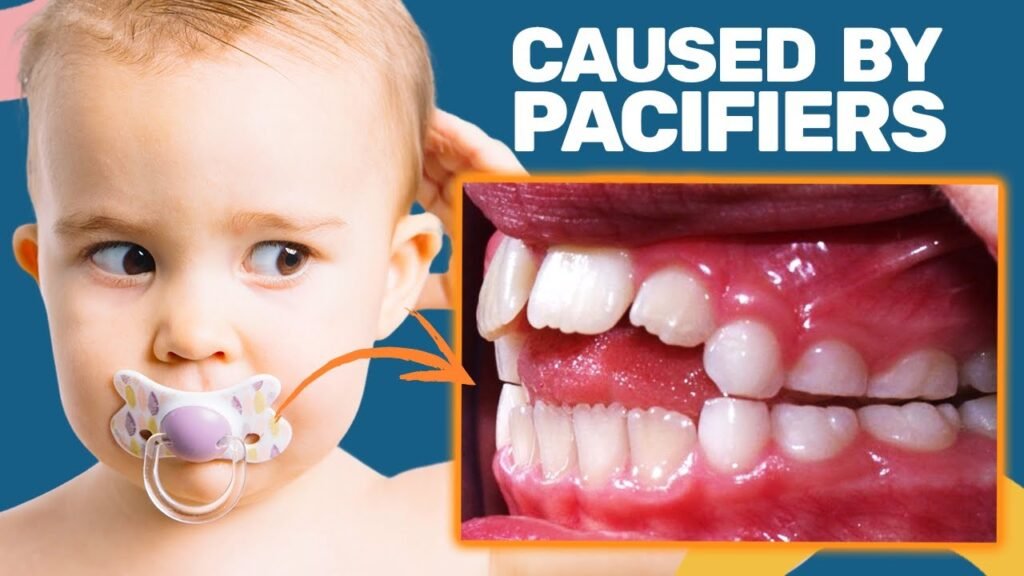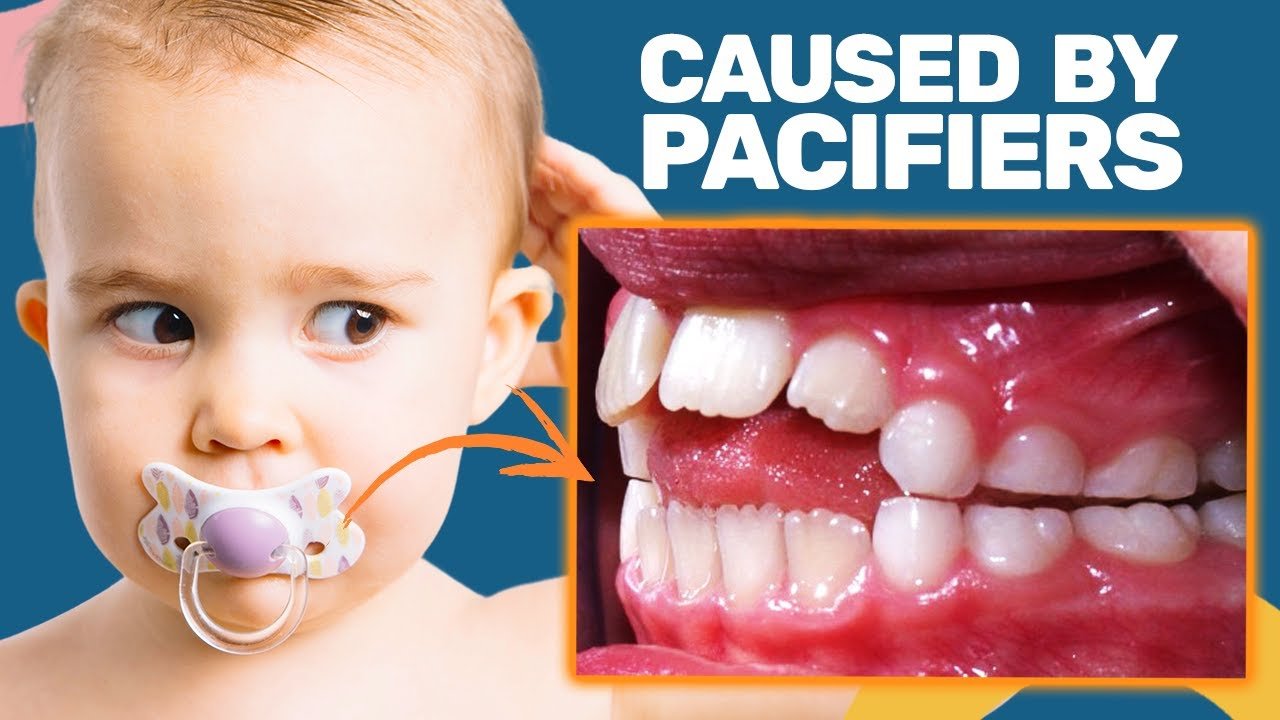“The Dental Risks of Improper Pacifier Use” explores the potential oral and dental risks associated with using pacifiers incorrectly. The article highlights the risks, such as overbite, underbite, and misaligned teeth, and emphasizes the importance of early weaning from pacifiers. It also offers advice on limiting pacifier use to nap times and bedtimes and suggests using alternative soothing methods for babies. Furthermore, the article discusses orthodontic pacifiers and their impact on dental issues, along with the recommendation to remove pacifiers by two years of age to prevent severe dental problems. The author, Emma Hubbard, provides valuable insights and tips to ensure proper pacifier use and minimize dental risks for infants and young children.
The Dental Risks of Improper Pacifier Use
Pacifiers can be a wonderful soothing tool for babies, but they do come with significant oral/dental risks when not used properly. Improper pacifier use can lead to issues such as an overbite, underbite, misaligned teeth, and changes in the roof of the mouth. These issues can have long-lasting effects on a child’s oral health and may require extensive dental treatment later in life.
Specific Risks Associated with Improper Pacifier Use
Improper pacifier use can have various negative effects on a child’s oral health. One common issue is the development of an overbite or underbite, which occurs when the pacifier pushes the teeth forward or backward. Pacifiers can also cause misalignment of the teeth, leading to an uneven bite and difficulty chewing. Additionally, prolonged pacifier use can cause changes in the roof of the mouth, such as narrowing or shaping the palate in an abnormal way. These issues can affect not only the appearance of the teeth but also the overall function of the mouth.
Recommended Age for Weaning from Pacifiers
Medical professionals recommend weaning children from pacifiers by the age of two. Early weaning from pacifiers is advisable to prevent severe dental issues. The American Academy of Pediatrics and the American Academy of Family Physicians both suggest stopping pacifier use by six months of age. At this point, most babies have developed the ability to fall asleep without relying on a pacifier. Moreover, excessive pacifier use can interfere with a baby’s language and fine motor development, as they are unable to properly explore and interact with their environment.

Minimizing Risk by Limiting Pacifier Use
One effective way to minimize the risk of dental issues associated with pacifier use is by limiting the frequency and duration of pacifier use. It is recommended to only offer the pacifier during nap times and bedtimes, which reduces the amount of time the pacifier is in the baby’s mouth. Gradually reducing the use of the pacifier throughout the day can help the child transition away from its reliance. For babies who are very attached to their pacifiers, a more gradual approach may be necessary. Initially, parents can remove the pacifier during happy playtimes and only offer it during more stressful situations, such as car rides or outdoor activities. Eventually, the pacifier can be reserved for sleep times only.
Effectiveness of Orthodontic Pacifiers in Reducing Dental Issues
Orthodontic pacifiers are designed to minimize the risk of dental issues by promoting proper jaw and palate development. These pacifiers have rounded tops and a flat bottom to prevent interference with the natural growth of the mouth. While orthodontic pacifiers may offer some benefits, research indicates that prolonged use of any pacifier, including orthodontic pacifiers, can still lead to misalignment of the teeth. Therefore, simply switching to an orthodontic pacifier or exclusively using one does not guarantee the prevention of future dental problems.
Alternative Methods to Soothe and Comfort Babies
Using alternative methods to soothe and comfort babies can reduce their reliance on pacifiers. While pacifiers are highly effective in the newborn phase, after six months of age, it is important to address the underlying issues causing a baby’s distress instead of immediately offering a pacifier. By identifying and responding to a baby’s needs, such as hunger, boredom, or the need for interaction, parents can teach their child alternative coping skills and reduce the frequency of pacifier use. This approach promotes healthy emotional development and reduces the risk of dental problems associated with prolonged pacifier use.
Preventing Dental Problems by Addressing Underlying Issues
Addressing the underlying issues that lead to a baby’s discomfort or distress can prevent the reliance on pacifiers and the subsequent dental problems they can cause. Instead of using a pacifier as a first line of defense, parents can identify the emotions their child is expressing and respond accordingly. Offering comfort, cuddles, or engaging in interactive play can help babies cope with emotions such as sadness, frustration, or anger. By teaching babies healthier ways to handle their emotions, parents can reduce the amount of time their child spends using a pacifier and minimize the risk of dental issues in the future.
Importance of Removing Pacifiers by Two Years of Age
Research shows that adverse dental effects can be seen in children who continue to use pacifiers after two years of age. The most significant malocclusions, or dental misalignments, occur in children who continue to use pacifiers past four years of age. Studies have found that children who cease pacifier use before two years of age have a significantly lower chance of developing misaligned teeth compared to those who continue to use pacifiers. Therefore, it is crucial to plan to wean children off pacifiers before the age of two to reduce the likelihood of future dental problems.
Minimal Fuss in Ditching the Pacifier
Ditching the pacifier can be done with minimal fuss if approached in the right way. By gradually reducing pacifier use and replacing it with other soothing techniques, children can adapt to the change more easily. Parents can create a supportive environment by offering comfort and understanding during the pacifier transition. Providing additional love and attention, introducing new comfort items, and establishing consistent sleep routines can help children feel secure and lessen their attachment to pacifiers. It is essential to be patient and understanding during this process, as every child adapts to change at their own pace.
Availability of a Video Guide to Stop Pacifier Use
For parents seeking guidance on how to stop pacifier use, a video guide by Emma Hubbard offers step-by-step instructions and tips. The video provides valuable insights into safe and healthy pacifier use, transitioning between pacifiers, and minimizing dental risks. It also shares the findings of a study comparing teeth alignment in children using various types of pacifiers, further emphasizing the importance of proper pacifier use. By accessing this video guide, parents can gain valuable knowledge and support in navigating the pacifier weaning process.
Overall, pacifiers can be useful tools for soothing babies, but improper use can lead to significant oral and dental risks. It is crucial for parents to be aware of the potential negative effects and take proactive steps to minimize these risks. By following recommended guidelines, limiting pacifier use, addressing underlying issues, and weaning children by two years of age, parents can promote healthy oral development and prevent long-term dental problems. With patience, understanding, and access to helpful resources such as video guides, transitioning away from pacifiers can be achieved with minimal fuss and optimal dental health benefits for children.

